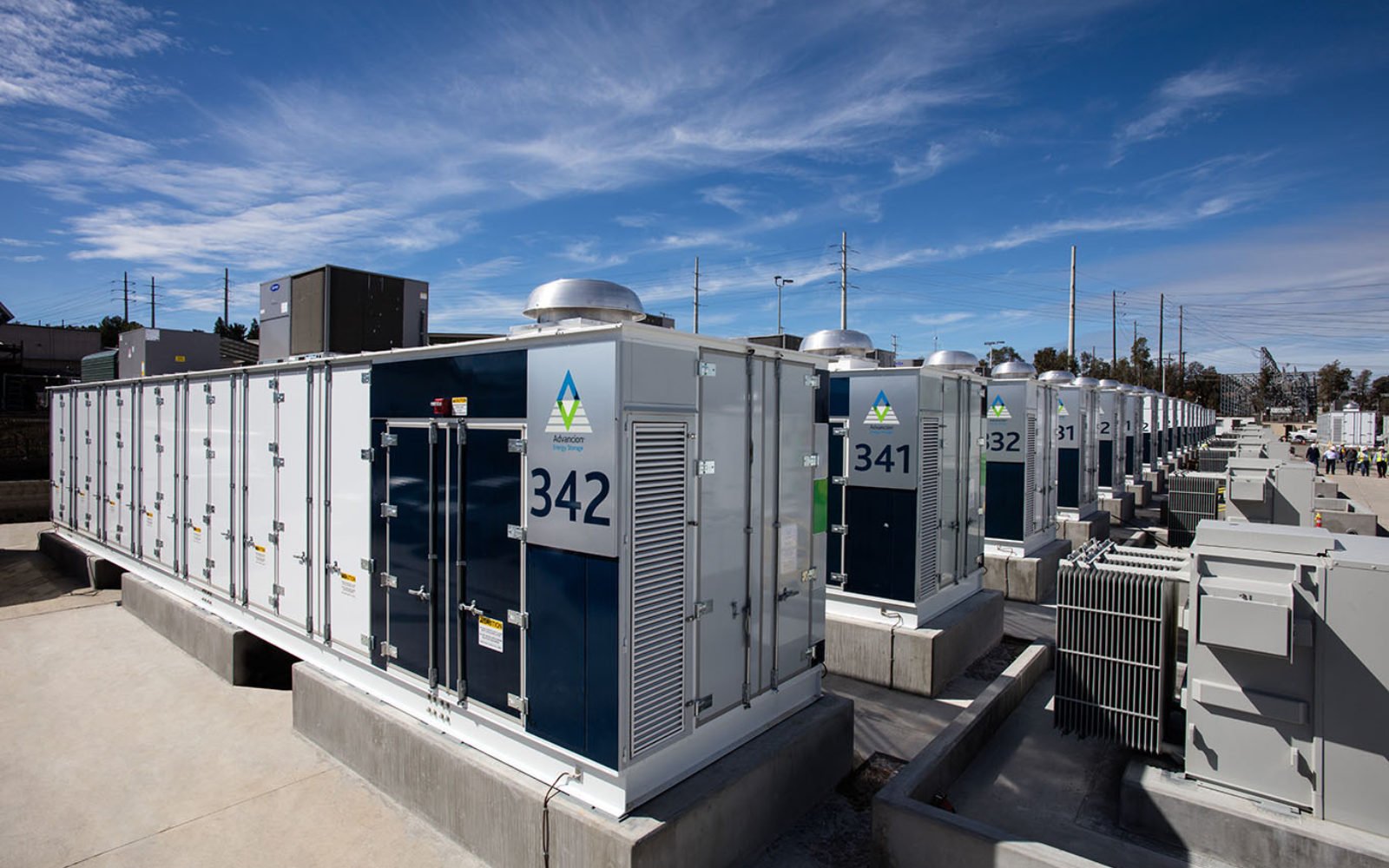Well, 2019 is already nearly two weeks old. We’ve been looking back on 2018’s biggest challenges and successes thus far, but now it’s time to truly leave the past behind.
In today’s third and final instalment of our series to welcome in 2019, we look at what our respondents are expecting to see this year, what they would like to see happen and some of the ways they will be trying to fulfil those expectations.
Enjoy 12 months of exclusive analysis
- Regular insight and analysis of the industry’s biggest developments
- In-depth interviews with the industry’s leading figures
- Annual digital subscription to the PV Tech Power journal
- Discounts on Solar Media’s portfolio of events, in-person and virtual
Or continue reading this article for free
Contributions have come in from Navigant Research, Fluence, Aggreko, NEC and Argonaut Power for this Editor’s Blog series.
Lithium is not the only target for cost reduction
We heard in our piece outlining some of the major challenges to the energy storage industry during 2018 that supply of lithium-ion was somewhat constrained, unless you were making batteries yourself, had very close links with major suppliers, or were based in South Korea and a direct recipient of contracts to build projects there.
Happily, Karim Wazni, managing director of Aggreko believes that as more production capacity comes online, as we continue to see around the world, we “will see a continued decline of prices as well as better availability of lithium”.
Similarly, Roger Lin, VP of marketing for Energy Solutions at NEC, said the economies of scale of lithium-ion, driven by the success of stationary storage as well as consumer electronics and EV markets, will be the leading driver of cost reduction achieved in 2019.
A virtuous circle of sorts will be fed, Roger Lin said, as the decreasing cost of energy storage leads to the uncovering of “more and more viable applications and business cases around the world – and thus the market will continue to grow”, he added.
That said, the battery itself won’t be the only driver of cost reduction by any means.
“Concomitant decreases in the cost of 'the other stuff' – power conversion systems (PCS), balance-of-plant, and EPC/installation costs – are becoming more important as the most expensive part of an energy storage system (the battery system) gets cheaper.
“Lithium-ion pricing has dropped over the past few years to create tremendous reductions, but [also], look for system integration advances to keep the industry on the declining cost curve’s pace,” Lin said.

Overall need for storage with renewables
Let’s take a quick look at what Roger Lin means when he says growing numbers of applications, geographies and business cases will open up as the energy storage market grows during 2019 and hopefully far beyond.
“The general pattern of energy storage opening a market in ancillary services first, followed quickly by market saturation, and then a slow but steady growth to enlightened electricity markets that value energy storage is holding true. This growth is driven largely by earlier projects and lessons learned,” Lin said.
One such example might be the behind-the-meter commercial and industrial (C&I) sector that UK financier and project developer Roberto Castiglioni of Argonaut Power has been working in during last year. His company is now seeing more interest from C&I customers keen to reduce their carbon footprint with onsite clean energy, Castiglioni said.
“Customers approach us to mainly reduce their environmental impact as primary concern, [while] of course managing cost of energy remains a key driver for the development of the sector,” Castiglioni said.
He adds also that the type of investors that have driven the UK’s renewable energy sector forward in the past 10 years “are supportive of the industry”.
“Now that subsidies are no longer available for renewable projects, they are looking at private wire installations under long term PPAs to deploy their capital,” Castiglioni said, with C&I an established market in the US and now expected to be seen more widely in other markets.
And what about solar with storage? As we’ve heard in the previous instalment of this blog, and repeatedly on Energy-Storage.news, solar-plus-storage is really starting to take off. We mostly remain at the four-hour limit on lithium-ion storage of PV energy, and while this is not enough to store power for use all night, or at all times when the sun is not shining, it can nonetheless go a long way towards reducing peak demand on the grid and reducing overall grid power consumption.
Alex Eller, senior research analyst with Navigant, said that there will also be system cost reduction gains made this year as solar-plus-storage scales up, in particular, if solutions providers are able to develop standardised solutions for that market.
At all levels, Eller said, from residential to commercial to utility-scale, vendors and developers are “pitching pre-designed solar-plus-storage [solutions] with increasingly competitive prices compared to standalone solar”.
Dear policymakers…
If there’s one area where almost every industry participant wants to see action, now, it’s in the policy space and consequently in the regulatory treatment of energy storage in practically all markets of the world.
That’s understandable when we’re talking about new technologies or new applications for existing tech. None of our respondents pointed fingers of blame or made accusations, but every one of them has a wish-list of what they think needs to happen for policymakers to be treating energy storage fairly – not even necessarily favourably.
“First, we need to see a phase-out of oil for power generation and to stop building natural gas peaking plants. Second, national governments should set bold targets for energy storage deployment in their countries by 2025,” VP of market applications for Fluence, Kiran Kumaraswamy said when asked what needs to be done this year to unlock the full potential of storage.
“As we’ve already seen in some markets, the learnings from setting deployment targets and starting their first procurements enables utilities and regulators to better understand storage’s value in a variety of applications.”
That adoption of stringent and ambitious renewables targets, which many local and some national authorities have already put in motion, is already offering “tremendous opportunity for market expansion, especially for long-duration energy storage,” Javier Cavada, managing director of Highview Power said.
Cavada said long duration technologies such as the liquid air energy storage (LAES) which his company provides, are likely to benefit, “due to the adoption and implementation of 100% renewables targets set by municipalities and utilities world-wide, as well as specific mandates for energy storage,” as has been seen in multiple US states.
Other policy wins made in 2018 that can be capitalised upon by the energy storage industry include FERC Order 841, which instructs US network operators to open up wholesale markets for energy storage participation. We’ve already mentioned that one at length and Aggreko’s Karim Wazni adds that in many other developed markets of the world, updated regulation is required that can allow “aggregation of the benefits of energy storage”.
Kiran Kuraswamy of Fluence similarly argues that “regulatory changes, currently occurring in all markets across the globe, that encourage storage participation in ancillary service markets and appropriate compensation for providing these services are critical”.
New procurement rules that require storage to be considered in integrated resource planning (IRPs) by US utilities in states including Colorado, New Mexico and Washington also drive greater consideration – and ultimately procurements of storage, Kiraswamy also said. Some of 2018’s policy wins are undoubtedly going to continue into 2019, come whatever else may.
Furthermore, “solidifying of regulatory rules for market participation” will continue this year in numerous markets, including the UK and China for ancillary service markets, Alex Eller of Navigant said.

Finance and regulation are the barriers now, not technology or feasibility
Also looking at the macro level, the World Bank recognised last year the benefits that energy storage and distributed microgrids, in particular, could enable for developing countries, committing US$1 billion to a fund. Fluence’s Kiran Kuraswamy identifies incentives from multinational institutions such as the World Bank as being “powerful drivers for storage adoption”.
Ultimately, the energy transition can’t continue successfully if it can’t be paid for, or if it can’t create sustainable industries. Yet as has been seen in renewable energy, it has been possible to scale up financing to the point where the low-cost energy juggernaut took on a life of its own.
To the same end, “financial institutions, banks and governments should extend the same financing mechanisms to energy storage that have been central to scaling renewables and financing other power assets,” Fluence’s Kiran Kumaraswamy said.
“Long-term power purchase agreements, financial institutions providing credit support to improve off-taker credit quality, and blended capital structures where projects can receive performance-based payments,” are all potential options, Kumaraswamy said.
Education of all stakeholders will be key to making this happen, as several respondents said.
“We have more work to do to help the market understand that we are ready now, the technology is ready now, we don’t have to wait until 2050,” Javier Cavada of Highview Power said about growing the deployment of long duration energy storage technologies.
“Long-duration energy storage needs to be deployed more broadly to enable renewables to become reliable enough to serve as the baseload power source.”
Argonaut Power’s Roberto Castiglioni said that there needs to be “more visibility over cash flow” for behind-the-meter storage projects in the short and medium term in the UK’s C&I space, while “educating stakeholders has been one of our main activities as the market is at its infancy with interest growing from users, investors and operators,” Castiglioni said.
Nonetheless, if we accept that the energy transition and move to a low carbon society is needed – and it is – energy storage will be an important piece of the puzzle, Roger Lin of NEC said.
“Broadly, a cleaner and more efficient electricity sector, including generation, transmission, distribution, and loads will require intelligently-operated energy storage to enable more PV, wind, demand response to work in concert.”
“This is the only way we as a civilisation can transcend the fossil-fuel-powered, rigid, centralised, analogue electricity networks of the old to the clean, flexible, efficient, decentralised, digital electricity networks of the future,” Lin said.
